-
THE SHERIFF
-
THE SURVIVOR
-
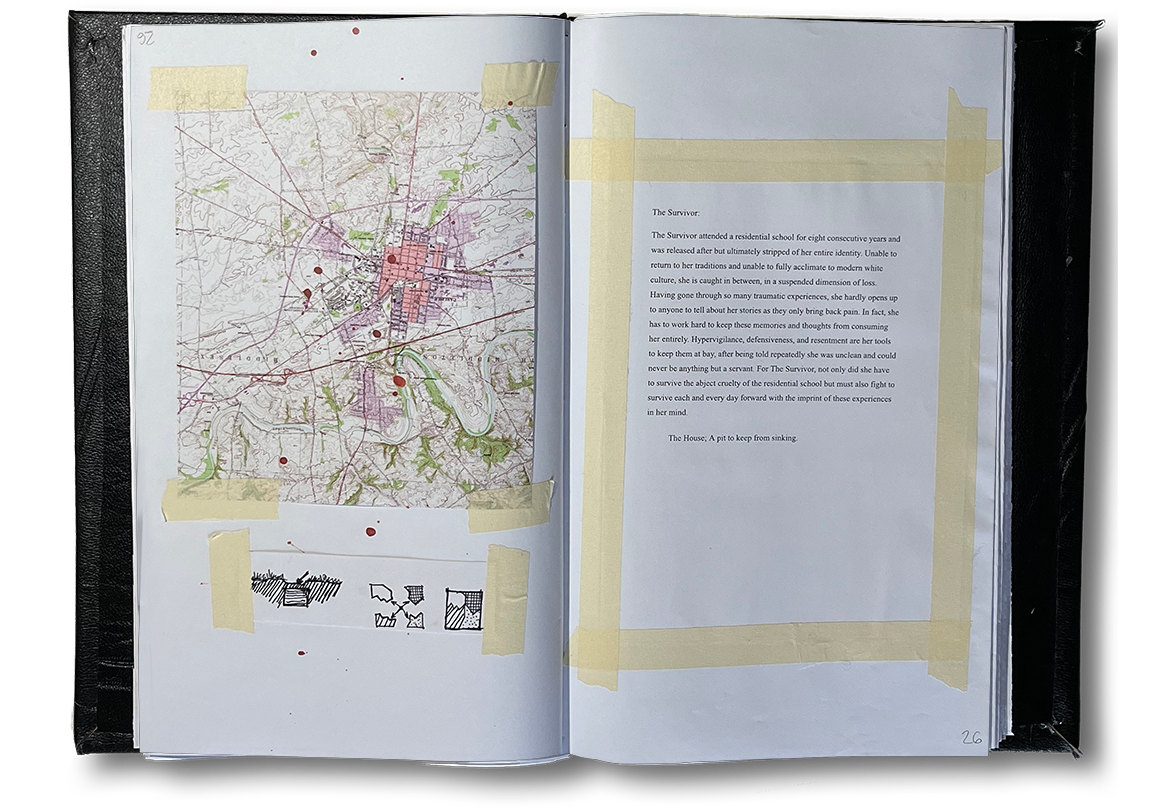
-

-
#26 titled The Digsite shows the archeological excavation and reassembly of fragments scattered throughout the ground. This drawing references the process of finding unmarked graves near residential schools and the attempts to identify the specific children who were buried. Also the collection of testimonies from survivors who attended residential schools, contributes to the clearer understanding of what took place in these institutions.
-
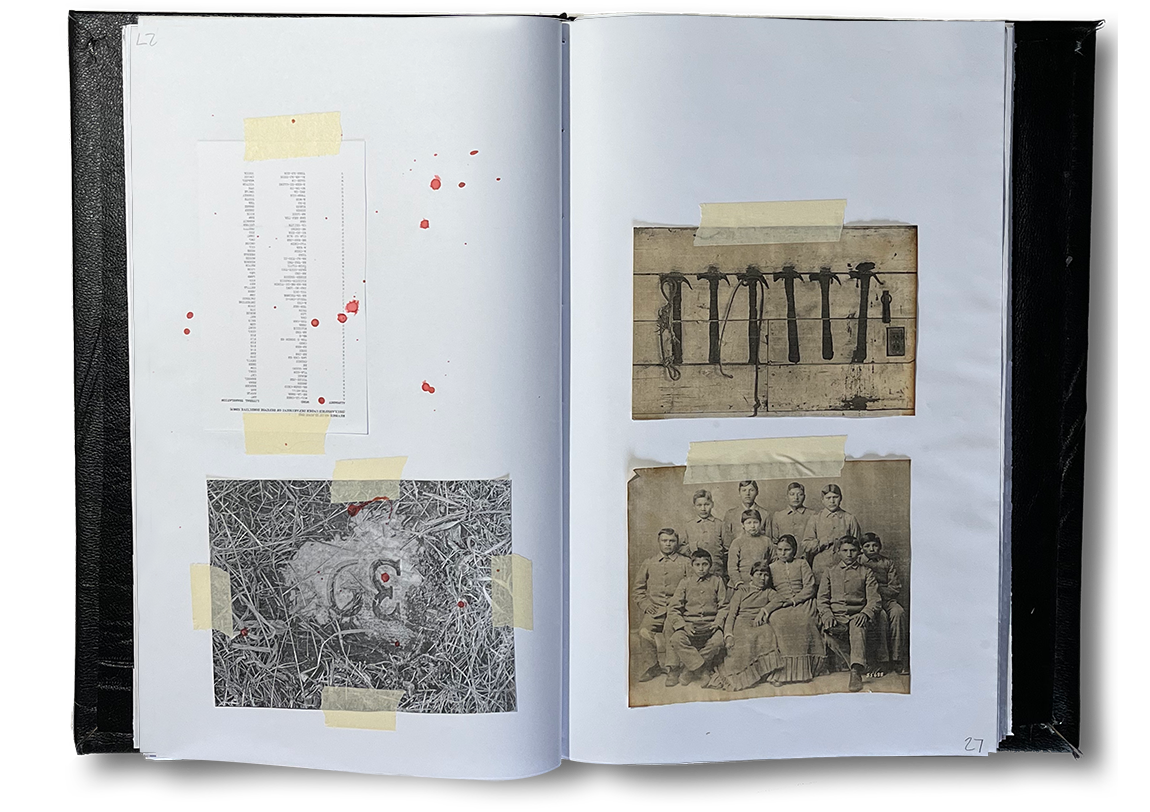
-
#27 titled The Void shows a perspectival space divided into two by sharp indents upward and downward. This drawing references the missing generation of native people as the residential schools that retrained or killed these children worked towards the ultimate goal of “kill the indian, save the man” (RH Pratt). Through the near erasure of native identity in an entire generation of people, today the cultural traditions and connections suffer greatly as ancestors and family are major factors in the continuation and wealth of native americans.
-

-
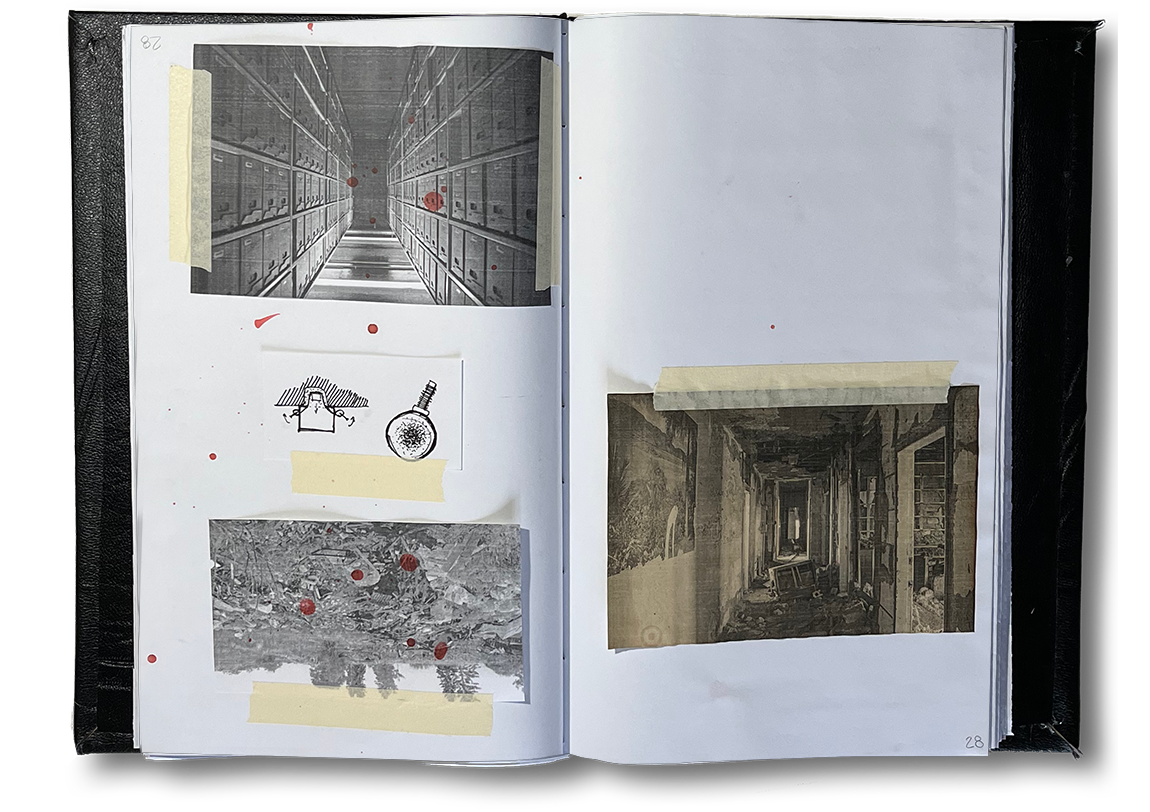
-

-
#28 titled The Corridor shows a walkway above and a walkway below, one orderly and clean and the other decrepit and abandoned. This drawing references the evidence gathered over the many years including: bodies found, testimonies shared, and transcripts that remained. Yet, despite these tangible records, there is still a great amount of inaction. Additionally, the first discoveries of the unmarked graves around residential schools were attributed to radar piercing technology which mapped below the surface of the ground.
-
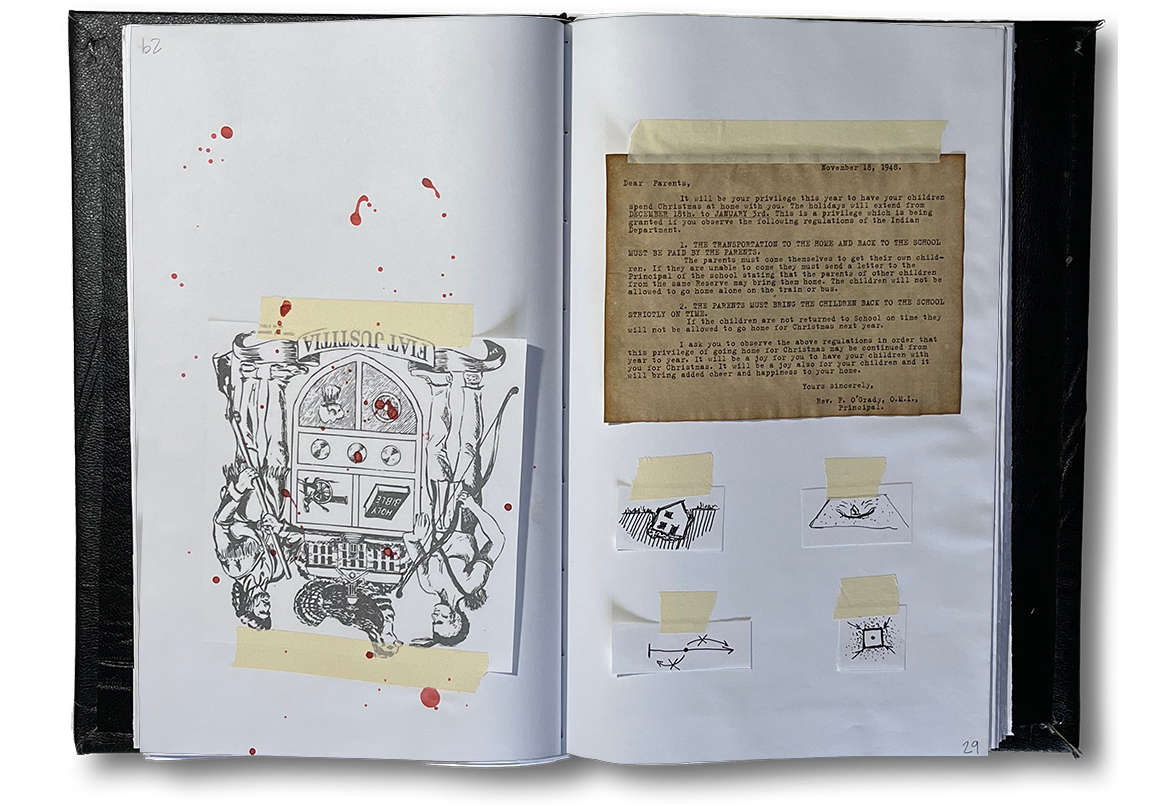
-
#29 titled The Sinkhole shows a chapel built upon a cavernous and unstable ground. The drawing references the events that took place at residential schools but even more so the after effects of covering up such atrocities. Yet, by concealing the truth of the past, no reconciliation can be made moving forward within these communities and the potential of past events repeating becomes greater. Also, the drawing parallels the gradual sinking of native identity ever since the conception of residential schools.
-

-
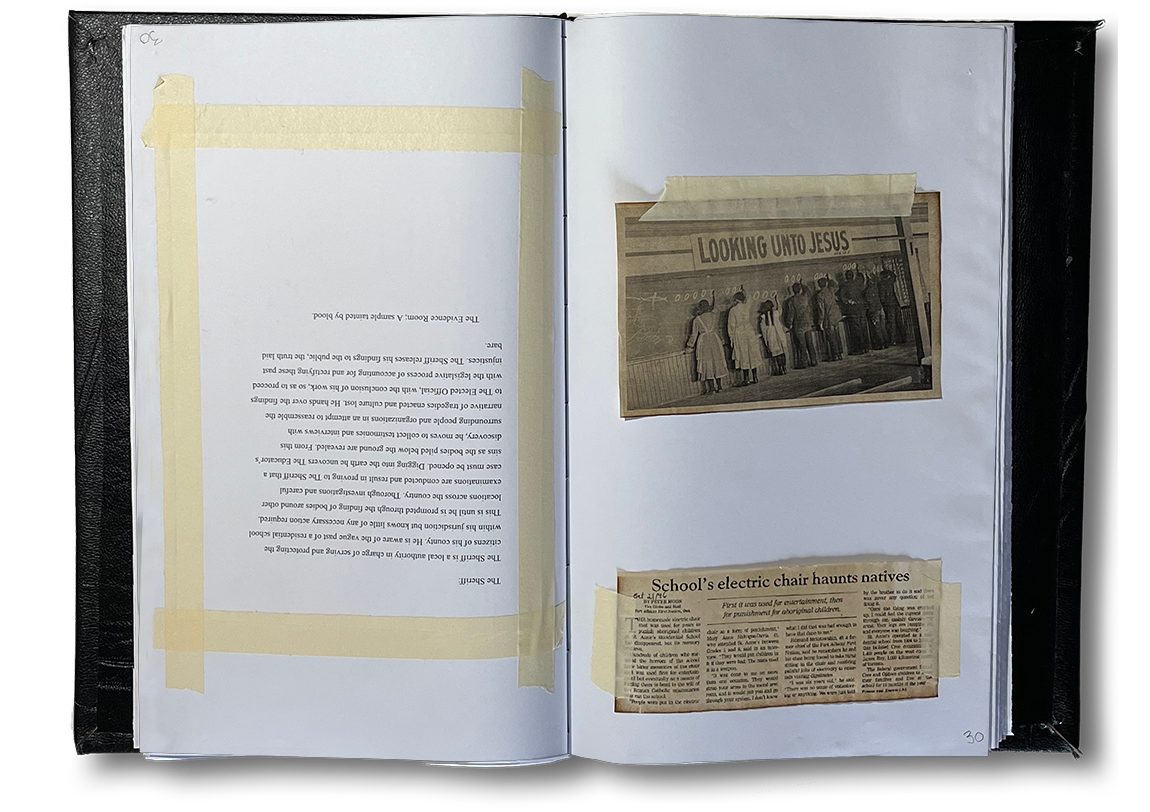
-

-
#30 titled The Homeroom shows a series of rooms containing chairs with straps facing blackboards. The drawing references the forcing of native children to learn English and adopt white culture. Any resistance to these practices would result in a number of punishments. Survivors of residential schools have testified about their experiences while attending and stories included mention of punishments that would range from punching, whipping, raping, stripping, humiliating and electrocuting.
-
Back